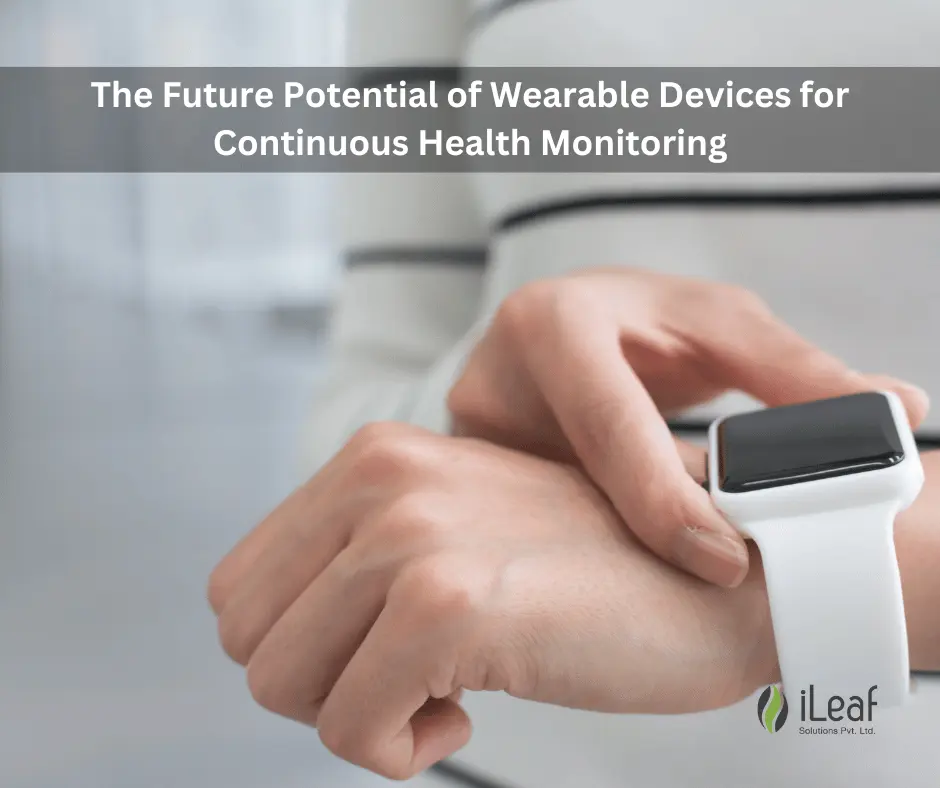Wearable Tech Revolutionizing Healthcare: A Boon for Patients & Providers

Table Of Contents
- Introduction
- The Benefits of Wearable Technology in Healthcare
- Enhancing Remote Patient Monitoring with Wearable Devices
- Commercial vs. Personal-Grade Wearables: Striking the Right Balance
- Empowering Healthier Lifestyles through Wearable Health Trackers
- The Future Potential of Wrist Wearable Devices for Continuous Health Monitoring
- Conclusion
1. Introduction
Imagine a tiny device on your wrist, silently monitoring your heart rate, sleep patterns, and even blood sugar levels, while seamlessly sharing this data with your doctor in real-time. This is not science fiction, but the present-day reality of wearable technology in healthcare. These unassuming gadgets are revolutionizing the way we manage our health, empowering patients and transforming the lives of healthcare providers.
2. The Benefits of Wearable Technology in Healthcare
The benefits of wearable technology are manifold. For patients, these devices offer:
- Continuous Health Monitoring: Wearables track vital signs 24/7, providing valuable insights into overall health and early detection of potential issues.
- Improved Chronic Disease Management: Devices like smart glucose monitors and blood pressure trackers empower patients to actively manage their condition and receive proactive care.
- Enhanced Remote Patient Care: Telemedicine appointments become more effective with real-time data from wearables, allowing doctors to remotely monitor progress and adjust treatment plans.
- Personalized Health Insights: Wearables personalize healthcare by delivering actionable feedback on sleep patterns, activity levels, and stress management, guiding users towards healthier choices.
For healthcare providers, wearables offer:
- Enhanced Patient Engagement: Real-time data fosters better communication and collaboration between patients and providers, leading to improved treatment adherence and outcomes.
- Early Detection of Complications: By continuously monitoring vital signs, wearables can potentially help doctors identify and address complications before they become major health concerns.
- Optimized Resource Allocation: Real-time data from wearables can help healthcare systems prioritize resources by identifying patients who need immediate attention.
- Improved Care Efficiency: Remote monitoring through wearables allows providers to manage a larger patient base effectively, providing greater access to quality care.
3. Enhancing Remote Patient Monitoring with Wearable Devices
Wearables are no longer just fitness trackers. Advanced devices can now monitor a plethora of health parameters, including:
- Vital Signs: Heart rate, blood pressure, oxygen saturation, and body temperature can be continuously monitored, allowing for early detection of abnormalities.
- Biomarkers: Some wearables are equipped with sensors to monitor specific biomarkers like glucose levels or even cardiac markers, crucial for managing chronic diseases.
- Sleep Patterns: Sleep quality and duration play a vital role in overall health. Wearables provide detailed sleep analysis, aiding in diagnosis and treatment of sleep disorders.
- Mental Health Indicators: Certain wearables track sleep patterns, heart rate variability, and other data points that can potentially be used to monitor mental health and well-being.
This continuous data stream empowers healthcare providers to remotely monitor patients, intervene proactively when needed, and personalize treatment plans based on real-time health insights.
4. Commercial vs. Personal-Grade Wearables: Striking the Right Balance
The wearable technology market offers a spectrum of devices, from readily available consumer-grade fitness trackers to advanced medical-grade wearables used in clinical settings. While commercial wearables are often more affordable and user-friendly, their accuracy and data security may not meet the stringent requirements of healthcare. On the other hand, medical-grade wearables offer greater accuracy and data security but come at a higher cost and may be less user-friendly.
Finding the right balance between accessibility and accuracy is crucial. For general health monitoring and wellness goals, commercial wearables might be sufficient. But for managing chronic conditions or participating in clinical research, medical-grade wearables are necessary. Healthcare providers play a critical role in guiding patients towards the most appropriate device based on their individual needs.
5. Empowering Healthier Lifestyles through Wearable Health Trackers
Wearable health trackers go beyond mere data collection. They nudge users towards a healthier lifestyle by offering personalized goal setting, activity tracking, sleep insights, and even stress management techniques. The gamification of health data, with badges and rewards for achieving goals, further motivates users to stay active and make positive changes. This empowers individuals to take control of their health, leading to improved fitness levels, better sleep habits, and overall well-being.
6. The Future Potential of Wrist Wearable Devices for Continuous Health Monitoring
The future of wrist wearables is brimming with possibilities. Advancements in sensor technology promise continuous monitoring capabilities beyond our wildest dreams. Imagine wrist wearables that can:
Track Blood Sugar & Oxygen Levels Continuously: Non-invasive sensors could eliminate the need for finger pricking for glucose monitoring and provide real-time oxygen saturation data, revolutionizing diabetes and respiratory disease management.
Monitor Mental Health Biomarkers: Advanced sensors might track skin conductance, heart rate variability, and sleep patterns to offer insights into stress levels, anxiety, and even early signs of depression, paving the way for personalized mental health interventions.
Detect Early Signs of Illness: AI-powered algorithms analyzing real-time data could potentially detect early signs of infections, chronic diseases, and even cancer, enabling immediate preventive measures and improving prognosis.
Personalized Nutritional Guidance: Wrist wearables integrated with diet trackers and bioimpedance sensors could offer personalized nutritional recommendations in real-time, optimizing health based on individual metabolic needs and activity levels.
These advancements go beyond simply tracking steps and calories; they hold the potential to transform preventive healthcare, early disease detection, and personalized medicine.
7. Conclusion
Wearable technology is not just a fad; it's a game-changer that is reshaping healthcare for both patients and providers. From continuous health monitoring and remote patient care to empowering healthier lifestyles and revolutionizing disease management, the potential of these tiny devices is truly remarkable. As technology continues to evolve, the future of healthcare hinges on harnessing the power of wearable technology responsibly, ethically, and inclusively. By embracing this revolution, we can unlock a healthier future for all.














